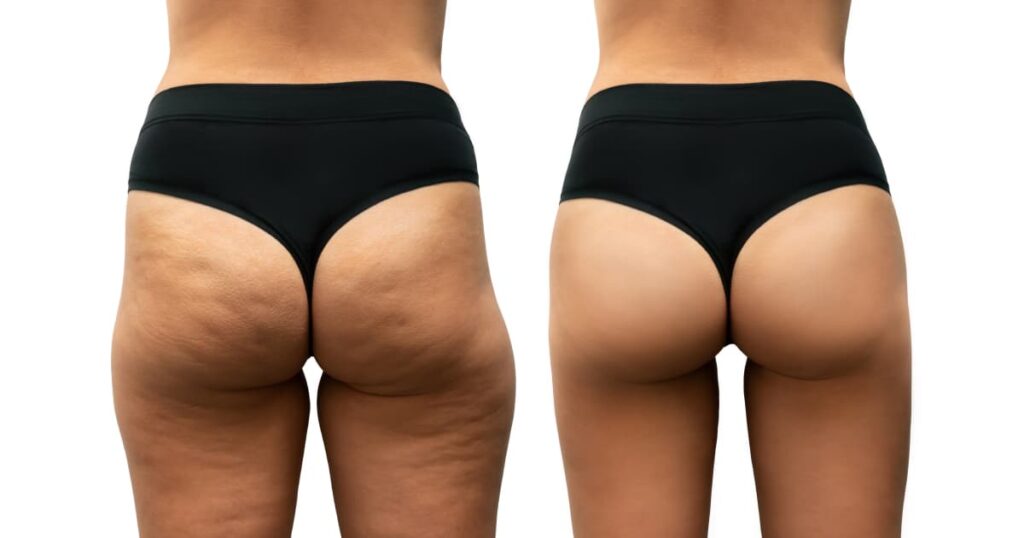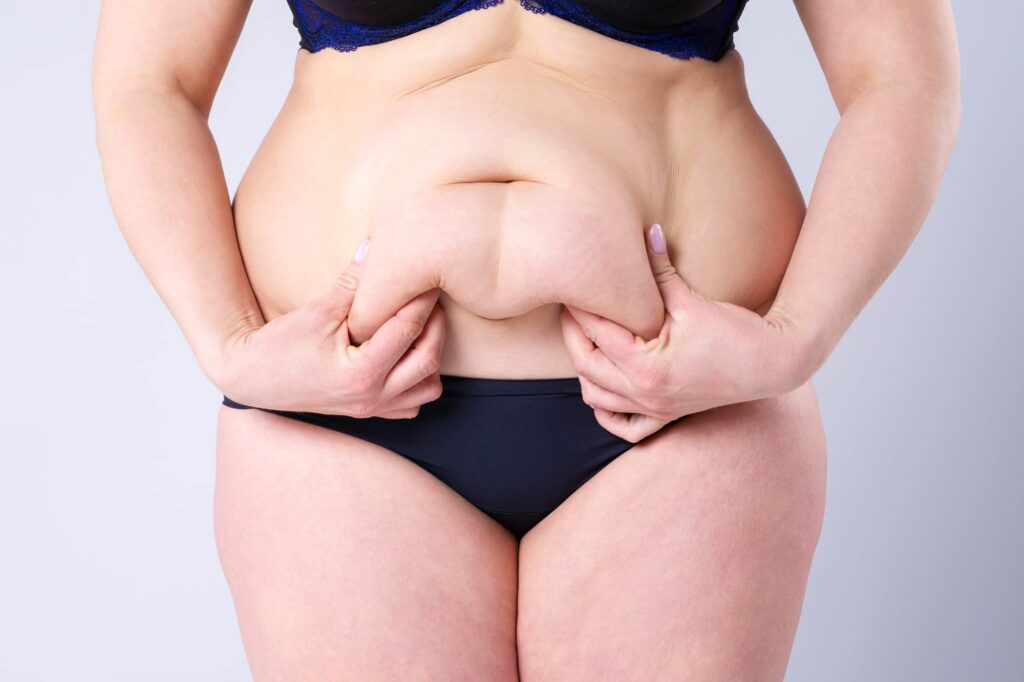Key Takeaways
- Tighter, healthier skin is firmer, smoother, and more youthful in appearance, all adding up to better self-esteem and increased happiness. It can make you feel more confident socially as well as professionally.
- Age, hydration, nutrition, lifestyle choices all play a role in skin elasticity. Eating a nutritious diet and drinking plenty of water are foundational to the appearance and health of your skin.
- The visible effects of unhealthy skin are the formation of wrinkles, sagging and uneven skin texture. These impact confidence and emotional well-being.
- When skin is healthy, we feel it with amazing positive body image, stress relief, and emotional resilience. A regular skincare regimen and techniques to manage stress are important first steps.
- Increased regular exercise and improved circulation Featuring tighter, healthier skin greatly boosts vitality, helping you feel radiant and confident.
- Consistent long-term skin care prevents premature aging, promotes emotional balance, and protects self-confidence for years to come.
Feeling confident usually begins with how you feel about your skin. Feeling fabulous Tighter, healthier skin makes you feel more physically attractive, which translates into greater self-confidence and emotional well-being. It’s not only the visible effects that matter, but the improvement of how you feel day to day.
Healthier skin can be a visible sign of how well you’re taking care of yourself. Taking this care can increase your self-confidence and enhance your overall quality of life. Whether it’s from increased hydration or getting on a serious skincare routine, the emotional impact of small improvements can be significant.
Caring for your skin is more than just a regimen. It’s an opportunity to look and feel your best and let your inner beauty shine through! Feeling fabulous starts with realizing how tighter, healthier skin plays into emotional and mental well being.
What Is Tighter Healthier Skin
Definition of Tighter, Healthier Skin
Tighter, healthier skin means skin that looks and feels smoother, firmer, and more even. It’s the type of skin that speaks to health and exuberance. When skin is rich in this protein, it keeps its tightness and smoothness, making the skin look vibrant and alive no matter our age.
This healthier, tighter skin plays a role in providing a more positive self-image, which increases self-esteem and helps social interactions come more easily. Those who have smooth, youthful skin are typically less stressed out. This could be due to patients feeling more empowered about their look.
For instance, 86% of subjects with sagging skin reported an improved self-image after undergoing cosmetic procedures. Healthier skin improves your self-image and you feel more confident in yourself. This new confidence adds to your quality of life and fosters a more positive attitude overall.
Factors Affecting Skin Elasticity
The elasticity of our skin is influenced by many factors such as age, hydration levels, and nutritional intake. Aging depletes collagen and elastin naturally, which contributes to skin becoming looser. Staying hydrated and eating foods rich in vitamins and antioxidants can work to support elasticity.
For some, treatments with EndyMed Pro 3Deep offer a non-invasive solution to firmer skin and a more self-assured appearance. With good skincare maintenance, you can expect results to last 12 to 18 months or more. This results in long-term emotional benefits, including less social anxiety and greater overall mental health.
Signs of Unhealthy Skin
These are the hallmarks of skin aging, including wrinkles, loose skin, and uneven texture. Such skin conditions can impact self-confidence and even career advancement. Achieving improved skin elasticity, a brighter mindset, and increased comfort in social and work engagements is possible with the right combination of a healthy skincare routine and effective skin treatment options.
Emotional Benefits of Healthy Skin
1. Boosts Self-Esteem and Confidence
Healthy skin can have a tremendous impact on your emotional wellbeing and self esteem. By preventing premature aging signs like fine lines and wrinkles through a consistent skincare routine, you can maintain a youthful appearance that feels empowering. With the proper products, you can maintain your beautiful skin glow.
Simply knowing that you’re protecting yourself from sun damage gives you a lift of confidence. When you are confident and comfortable in your skin, you might just find yourself developing a better relationship with the person you see in the mirror. The emotional benefit of looking healthy inside and out can give you the fortitude to approach your next challenge with a new level of confidence.
As with all things, consistency is crucial. Small habits, such as moisturizing every day or wearing sunscreen regularly, add up in the long run and pay off in healthy skin. A consistent skin care routine provides emotional benefits that go beyond just having healthy skin.
It serves as an everyday act of self-care. As our board-certified dermatologist Dr. Erum Ilyas would tell you, caring for your skin is often the first step in any self-care routine. These little acts of kindness are helping your skin from the outside in. Emotionally, they create lasting benefits on so many levels. They create a great foundation for long-term confidence.
2. Enhances Social Interactions and Relationships
Being supremely confident and comfortable in social settings is the emotional benefit of having healthy skin. When you have clear, radiant skin, you’re less self-conscious and can connect more freely with anyone you meet. When you’re not stressing over a breakout or flakiness, going to events is a lot less daunting.
Then you can concentrate on having fun and making new friends. This new level of comfort will help you create new relationships and deepen current ones. Having healthy skin allows you to focus on developing deeper connections without being distracted by concerns over your appearance.
3. Reduces Stress and Anxiety
Enjoying a daily skincare routine doesn’t make you vain. It can be very soothing. A well thought out skincare routine can serve as a rooting practice, providing a moment of calm and certainty amidst the chaos of life.
In fact, research has gone so far as to connect stress to skin issues, like in the Stanford study that found exam stress made acne worse. Reducing stress improves both skin’s condition and your state of mind. For instance, practicing yoga can help reduce cortisol, so even just taking a few minutes to get centered can really help.
Consider treating yourself to a relaxing bath or facial massage to relieve stress. All of these activities can help initiate a positive cycle of decreased stress and improved skin health.
4. Encourages Positive Body Image
Being intentional about taking care of your skin helps you develop a positive perception of your natural self. When you start to see positive changes, it can motivate you to want to celebrate your body in all its forms.
Because it’s not just about looking good—it’s about feeling good in your own skin. For example, staying hydrated and eating antioxidant-rich foods improve skin elasticity and radiance, which can lead to a more positive perception of yourself.
In return, this can help foster a healthier body image, inspiring you to celebrate the beauty that makes you, you.
5. Improves Overall Happiness
When your skin feels and looks its best, your emotional state usually reflects that. Emotional well-being is connected to self-care. Spending a few minutes each day on these self-care rituals can be gratifying and help increase your happiness.
Applying a hydrating serum is one of the best ways to give your skin an instant boost. The post-exercise glow from increased circulation brings even more happiness to your day! In the long run, these healthier habits lead to a much more positive and happy disposition.
Psychological Impact of Skin Health
Connection between Appearance and Mental Health
The connection between the appearance of your skin and your mental wellbeing is more significant than you realize. Research has shown that skin diseases such as acne can have a debilitating effect on one’s mood. They frequently result in diminished self-esteem, increased anxiety, and at times depression.
This isn’t just a problem for teenagers—adults suffer from it as well. To illustrate, someone who suffers from chronic acne may avoid social gatherings out of concern for stares or comments that could be directed toward them. When someone has clear skin, their confidence is greatly increased, allowing them to feel less intimidated in social situations.
Clear skin improves overall confidence. Research has long demonstrated its powerful ability to influence how others perceive you, connecting it to perceptions of health, competence, and even leadership.
Role of Skin in Personal Identity
Skin has a profound impact on how you perceive yourself and how you think other people perceive you. Think about it: skin is one of the first things people notice. Just as it is for most, for them it’s an outward expression of their inner health and self-care practices.
Having clear, healthy skin can be the ultimate confidence hack, making you feel good in your own skin so you can be your best self. Yet skincare routines come across as complicated. Over half of people think they’re intimidating and difficult to maintain.
Finding ways to simplify this process could go a long way towards improving the self-esteem of those who want to feel good about how they look.
Influence on Mood and Emotional Stability
It’s true—your skin’s state of health can have a direct impact on your mood. When your skin feels and looks good, you’re more likely to feel good emotionally as well. Positive social interactions, which are sometimes associated with healthy skin, can improve emotional regulation.
For instance, people with clear skin tend to have more positive interactions at work, increased ability to communicate, and enhanced relationships. These benefits illustrate that skin health has wide-ranging effects on quality of life.
It is what cuts through to make that impactful first impression and cement long-lasting social ties.
Relationship Between Appearance and Well-Being
How physical appearance affects perception
Physical appearance plays a crucial role in how individuals perceive themselves and how they believe others perceive them. Clear, healthy skin is often a reflection of vitality and good health, significantly enhancing social interactions. For instance, multiple effective skin treatments like CoolPeel can lead to improved skin elasticity and a more youthful appearance, making skin look and feel refined and resurfaced.
When individuals feel good about their skin, it boosts their confidence in social settings. Hydrated skin is essential as it promotes faster healing after procedures, optimizing treatment results and leading to beautiful, natural-looking skin. This is particularly important for those seeking skincare solutions that enhance their overall skin quality.
Ultimately, body sculpting procedures deliver powerful emotional relief. Our patients often experience a sense of freedom after finally correcting years of body dissatisfaction, with patient satisfaction levels ranging in the 60-65% range. This relief directly produces an increase in self-confidence, as people start to think about their appearance with satisfaction instead of irritation.
Link between healthy skin and lifestyle choices
Beautiful healthy skin doesn’t occur overnight—it’s the result of years of positive skin care and healthy lifestyle choices. Getting enough to drink, for example, is important. Staying hydrated on a daily basis can lead to healthier skin that is more resilient and better primed for advanced treatments such as CoolPeel.
In addition to staying hydrated, a nutrient-rich diet and consistent skincare regimen work together for healthier skin over time. These practices are equally effective in supporting weight-loss solutions such as semaglutide. Most people experience noticeable short-term cosmetic improvements, including smoother, firmer body contour and skin elasticity to increase confidence and improve appearance.
Impact on professional and personal life
A strong sense of self translates into the workplace and home life. People who have clear skin and an ideal physique are likely to perform better in an interview, presentation, or networking event. Our personal relationships flourish as we radiate an inner confidence and poise that is magnetic to those around us. Incorporating effective skin care treatments can also contribute to improved skin elasticity, enhancing your overall appearance.
In professional spaces, glowing up can have a powerful effect on first impressions, too. Treatments such as CoolPeel can significantly enhance your complexion, providing effective skin tightening that leaves your skin looking more luminous and highlighting the benefits of your self-care routine and your careful attention to detail.
On a personal level, attaining that healthier appearance brings emotional fulfillment. This kind of change, supported by a healthy skincare routine, is almost always accompanied by more positive, enjoyable encounters with your significant other, family, and friends.
Strategies to Achieve Tighter Healthier Skin
Adopt a Balanced and Nutritious Diet
Healthy skin really does begin from within, and the food you consume is one of the biggest influencers. A diet rich in fruits, vegetables, lean proteins, and healthy fats provides essential nutrients like vitamins C and E, zinc, and omega-3 fatty acids.
These nutrients work together to increase collagen production, preserve skin elasticity, and fight inflammation. For instance, salmon is loaded with omega-3s, and spinach provides a healthy amount of antioxidants. Eating these foods consistently can lead to a dramatic improvement in skin texture and firmness.
Follow a Consistent Skincare Routine
A preventative daily skincare routine based on your skin type will help your skin stay tight and luminous for years to come! Cleansing purifies skin, moisturizing seals in moisture, and sunscreen defends skin from UV damage.
Include products with retinoids or peptides to increase collagen production. Exfoliate weekly to get rid of dead skin cells and create a nice, smooth texture. When used consistently, these products enhance the results seen with more intensive treatments such as 3DEEP.
This miracle treatment continues to improve your skin for months after the procedure.
Stay Hydrated Throughout the Day
Staying hydrated is one of the easiest and most effective ways to improve skin elasticity. Keeping skin well hydrated ensures that skin cells are full and provide the healthiest structure possible, resulting in smoother, plumper, tighter skin.

Try to consume at least 8 cups of water a day. Increase your hydration with foods such as cucumber and watermelon!
Exercise Regularly for Better Circulation
Physical activity in general increases blood flow, bringing oxygen and nutrients to the skin. This further helps boost cell renewal and produce that radiant luminescent glow.
Even low-impact exercises such as walking or yoga can help in achieving skin health. Regular movement complements skin-tightening treatments by keeping the skin rejuvenated longer.
Manage Stress to Prevent Skin Issues
Chronic stress is known to cause problems such as lackluster complexion and accelerated signs of aging. Making time for stress-reducing activities, whether that’s meditating or picking up a new hobby, can greatly impact skin health.
Interestingly, research found that individuals who received cosmetic procedures eventually had decreased stress levels and felt more positive within a few weeks. Reducing stress helps your mind and body—and it’s one of the best skin care tips for achieving a healthy glow.
Long-Term Benefits of Skin Care
Prevention of Premature Aging Signs
Taking care of your skin is more than just looking pretty. It’s key to keeping you safe from premature signs of aging, like fine lines, wrinkles and dulling of your complexion. That’s why a regular skincare regimen is so important.
It needs to have ingredients like sunscreens, moisturizers and antioxidants, to truly protect your skin against sun damage and environmental aggressors. Integrating a broad-spectrum SPF into your daily routine is one of the best ways to protect your skin from UV-related damage.
This additional protection helps to stop premature aging before it starts. It’s the little, daily things that add up to healthier, more resilient skin. This preventive measure leaves your skin less susceptible to typical signs of aging.
Maintenance of Emotional Resilience
Skincare routines provide more than just tangible physical results. They can help to form moments of relaxation and mindfulness into your day. Whether it’s five minutes of cleansing, moisturizing, or applying treatment products, the ritual can feel centering.
This simple act sends a positive message to yourself: “I’m worth it.” Research supports this, as well. A 2019 study in Frontiers in Psychology found that self-care habits like skincare can reduce anxiety and stress by interrupting negative thought cycles.
When paired with other routines, such as exercise or journaling, it can anchor your day, providing the stability and emotional regulation you need.
Support for Sustained Self-Confidence
Nothing is more beautiful than healthy skin. It’s a direct reflection of the time and care you put into yourself. Increased circulation from consistent skincare improves your overall wellness, while the skincare benefits—such as smoother, brighter skin—make you feel more confident.
When you feel more confident about how you look, that can mean approaching life’s challenges with a greater sense of audacity. People often experience feelings of pride and accomplishment when they maintain their routine, further boosting their self-esteem.
Conclusion
Firm skin is not just about looking younger. It makes you feel fabulous, enhances your self-esteem and contributes to your overall emotional health. Nurturing your skin boosts your self-confidence and changes the way you think and feel about yourself. This feeling fabulous change affects how you are received by people around you. Even small, consistent changes to your daily routine can make a world of difference.
It’s not even about doing it all, or chasing perfection. It’s about feeling fabulous, rejuvenated, looking like yourself, feeling fabulous inside and out, loving the skin you’re in, enjoying the benefits that regular maintenance brings. If you take the right approach, you can reap both physical and emotional benefits.
Take our pledge to be more age-inclusive. It’s an investment in you! A daily approach to caring for your skin can make all the difference in how you feel each day.
Frequently Asked Questions
What is tighter, healthier skin?
Firm, elastic, smooth skin contributes to a youthful look, while tighter, healthier skin feels better than loose skin. In fact, it can combat signs of skin aging, making the skin appear more vibrant and fresh. Achieving this requires optimal hydration, nutrition, and an effective skin care routine.
How does having healthier skin affect emotions?
When patients feel fabulous, their confidence and self-esteem are enhanced, contributing to improved skin elasticity and a glowing complexion, alleviating stress and anxiety linked to worry over one’s appearance.
Can skin health impact mental well-being?
Yes, studies have found that skin health is connected to mental well-being. Maintaining effective skin care routines for clear, firm skin usually leads to better self-worth and boosts mood in the process.
What’s the connection between appearance and well-being?
How we look matters to how we feel about ourselves. Tighter, healthier skin not only enhances skin appearance but also boosts self-confidence, positively impacting emotional and social well-being.
How can I achieve tighter, healthier skin?
Follow a regular skincare routine that includes sunscreen, moisturizing creams, and exfoliating products to enhance skin quality. Keep up with effective skin treatments like facials or microdermabrasion for improved skin elasticity and a radiant complexion.
Are there long-term benefits to proper skincare?
Of course, a healthy skincare routine protects against premature aging, smooths fine lines and wrinkles, and enhances skin elasticity. It provides antioxidant benefits, helping to guard against damaging environmental aggressors to maintain a youthful look and glowing skin.
Is professional help necessary for improving skin health?
That’s where professional guidance in skin care comes in. Through individualized skin care routines and specialized skincare treatments, dermatologists can safely treat skin concerns while dramatically improving skin appearance.











